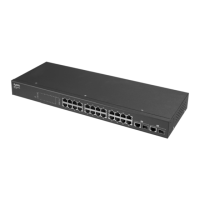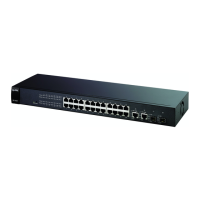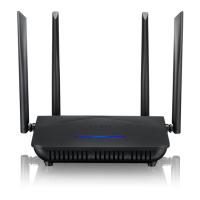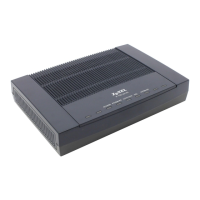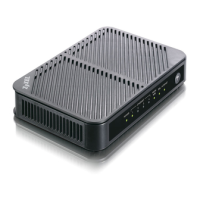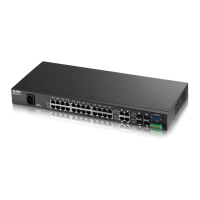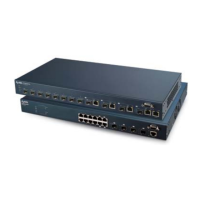IES-1000 User’s Guide
10-14 Getting Started Screens
Figure 10-13 Bridge IGMP Snooping Record
The following table describes this screen.
Table 10-12 Bridge IGMP Snooping Record
LABEL DESCRIPTION
Bridge Setup Click this link to go to the Bridge Setup screen.
IGMP Snooping
Timeout
Specify how long the IES-1000 is to retain entries in the group membership table.
IGMP Snooping
Mode
Select enable (unknown-flood) to have the IES-1000 only forward group multicast traffic to
ports that are members. IGMP packets for multicast groups that the IES-1000 has not
learned are flooded to all of the IES-1000’s ports. This reduces the amount of multicast
traffic passing through your switch.
Select enable (unknown-discard) to have the IES-1000 only forward group multicast traffic
to ports that are members. The IES-1000 drops IGMP packets that are destined for
multicast groups that the IES-1000 has not learned. Selecting enable (unknown-discard)
results in less multicast traffic passing through your switch than if you select enable
(unknown-flood).
Select disable to treat multicast traffic in the same manner as broadcast traffic, that is, it is
forwarded to all ports.
Apply Click Apply to save your changes back to the IES-1000's volatile memory. The IES-1000
loses these changes if it is turned off or loses power, so use the Config Save link on the
navigation panel to the left to save your changes to the non-volatile memory when you are
done configuring.
ID This field displays the location of the entry in the multicast filtering database.
VLAN ID This is the VLAN ID (Virtual LAN ID) for the multicast group.
Group IP
Address
This field displays the multicast IP address of a multicast group.
MAC Address This field displays the last three bytes of the MAC address to which the multicast group is
mapped.
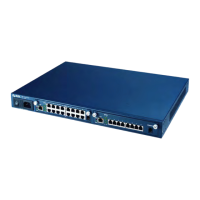
